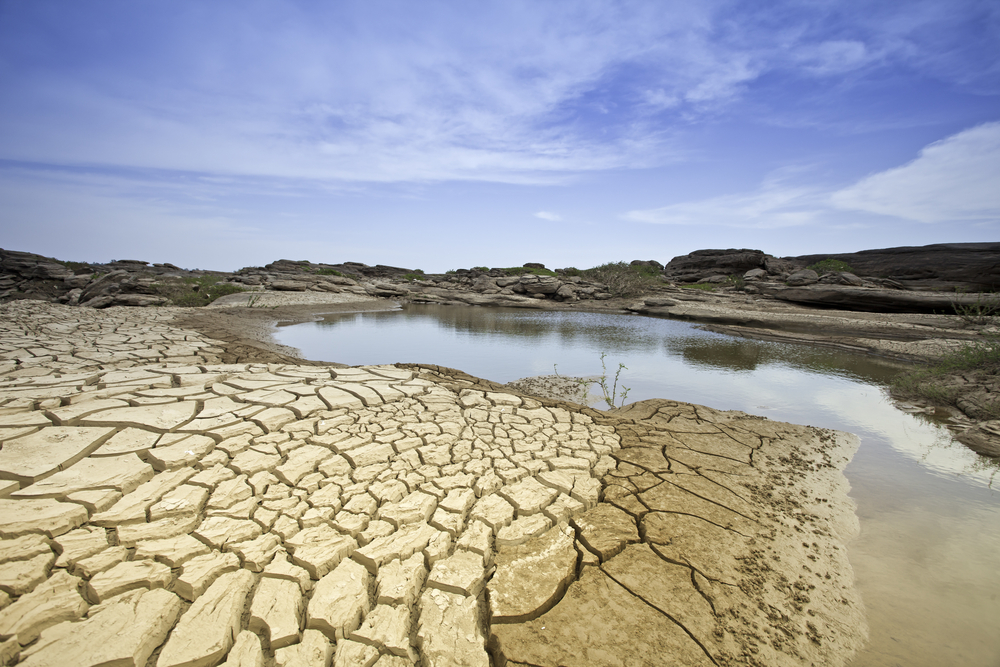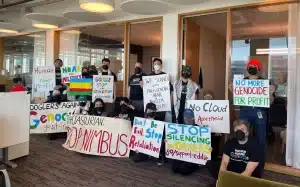Image from Science in Culture
Reports of severe weather events and the dwindling of endangered species, in the shadow of world politics, have conjured a recent, now popular neologism – the Anthropocene.
The term marks a new planetary era in which human might has not only become tantamount to, but has even surpassed, the force of nature. Coined in 2000 by Paul Crutzen, the Anthropocene captures both the conceptual and the real historical meanings of this epochal transition, with humanity at its center, having seen neither rival nor equal. So profound has been the impact of human activity on earth that it will be preserved in the geological substrate for several millennia to come.
The Anthropocene may be something delineated in the geotic time scale, but its beginning coincides with the intercession of humanity in ecology. Human domestication of certain non-human, and even plant, life forms set the early stages of development. The advent of agriculture was nearly 12,000 years ago; its industrialized forms now make up nearly 24% of global CO2 emissions. But other human events cascaded into the violation of nature’s autonomy, with even graver consequences. There was the very uniquely human transoceanic travel to Australia some 45,000 years ago that, according to Yuval Harari in Sapiens, began the interpenetration of geographically distinct ecological zones. And the violent conquest of and accumulation from the new world by the old, which further tipped the scale toward the planet’s amalgamation into a single ecological unit.
Then came along our rapacious carbon-based economy that justified through the cosmologies of international competition the absolute imposition of human agency.
Just as we begin to grasp the real meaning of our anthropocentric perspective on ecology, that its consequences are human in scope while planetary in scale, things have been altered irrevocably.
Earth is nearly 5 billion years old, so in the planetary annals our rapid acceleration into the Anthropocene is remarkable. Think about it: The world total number of human life years (7.5 billion) lived to date far exceeds the number of years earth has existed. Already, people and domesticated livestock animals constitute about 90% of global biomass, roughly 1 billion tons. Global production of CO2 since 1751 has surpassed 400 billion metric tons. The profligate global production of CO2, from the mass extraction and burning of fossil fuels, since the Industrial Revolution in 1751, has surpassed 400 billion metric tons. Then there’s the creep of radiation driven by Cold War politics and the unflagging thirst for energy. And the genome has been decoded, unraveled.
We are exceptional, we are “homo sapiens” (latinate for wise, conscious man). Clearly. This line of thinking is what birthed an anthropocenic ideology, that humanity is entitled to impose itself even into the atomic and subatomic structure of all life.
Once humanity is taken as immutable, factual, then all of observable life becomes sapient and conscious, that is, made to be like ourselves. Humankind becomes the measure of all things, the constant, which holds, as it were, the Shakespearian mirror up to nature to see only itself, to show “the age and body of time its] form and pressure.” We see things not as they are, but as [we are. Climate events, however, can blow the clouds from our eyes, having shown the limitations of our anthropomorphic worldview. Such events expose how geologically malapropos the organization of human life has been. They not only inconvenience our way of life, but also have an existential psycho-social function, challenging the supremacy of humankind.
Recall snowstorm Stella, occurring earlier this year along the US northeast coast. There was the initial anticipation of the weather event itself. The mass closures of public amenities and infrastructure. The deep dark that ushered in snow as if to swallow us whole. Streets became impassable and the city, it seemed, was about to be brought to its knees. Public funds were diverted to keep the storm’s damages at bay and to maintain life as we knew it. Amidst the disorienting fog of panic, the city revealed its obsolescence, for it could not manage such climactic crises. As deadly heatwaves flare in June, mysterious drops of water seemingly falling out of the sky on a sunny NYC day, actually from AC units installed in windows, remind us that just fourteen years ago, NYC’s electric grid failed. Try as it might against snow or heat, infrastructure is losing the race against climactic changes. In this moment, when anthropocenic disasters abound, it is because the human structuring of life dictates the way we will experience nature, rather than vice versa. Only when the mania of the event ebbs, is a return to a semblance of normalcy achieved – first in the mind, second in pseudo-reality.
In our imagined world, nature is more nature, the more it is groomed, shaped, and hence human; the less human it appears, the less recognizable it is and the more it fades out of recognition. We erect spaces, like Central Park, to showcase nature as it should be, rather than as it is. Like parks, industrial monocultures of human foodstuffs – cattle, poultry, and maize – further enable humanity’s specifications to determine earth’s biospheric make-up. Agricultural subsidization, like the laws of commerce, compounds this in reality, as it de facto reconstitutes the planet. No longer is nature the inverse to our animated state of being or that which, like animals, is to be brutalized into submission as our beast of burden. It can no longer be that nature, in the human conceit, blindly follows its course, while human history is to be charted and understood.
In a recent study, Yale scientists argued that a phenomenon based on the regulatory temperatures emitted by oceans, known as El Niño (which warms the earth’s surface) and La Niña (which cools it), has masked the effects of the rising global mean temperature. This modulation will soon phase out with a vengeance, and it has already begun with mass coral bleaching, the loss of life-sustaining algae in coral tissue caused by warming oceans. So, have we been deluded by a protracted period of climate variability, known as a “global warming hiatus”? With heat rising into the summer, just as reports of melting glaciers become incessant, whether the phalanx of world leaders stand to wean off fossil fuels remains to be seen. This especially when the nation is put first, when the peoples of, say, “Pittsburgh” trump those of “Paris.”
Meanwhile, 1,300 kilometers beyond the arctic circle, deep in the permafrost, unseasonal rainfall on the Norwegian island of Spitsbergen signaled doom. The “failsafe” non-waterproof protection of the Norwegian global seed vault was proven fallible, when it was recently flooded. The future of agriculture teeters warily on the knife’s edge because we can no longer design ourselves to insure survival or safety from the imminent threat of food contamination. Although the rain that impinged upon the vault did not affect the millions of seedlings there, and did not yet herald the end to our future ability to feed ourselves, 2017 will surely surpass preceding years as the hottest.
The full sweep of our historical conquest of nature, then, might ultimately become – in tragedian terms – the petard with which we hoist ourselves. Quite literally, too. The Anthropocene has too consistently demonstrated the human capacity for self-annihilation, rather than progression. It has assumed pernicious forms, such as GMOs, unexploded cluster bombs and deadly toxins that have bioaccumulated and melded into the soil of Laos and Syria. Or even something so seemingly innocuous as a plastic Yoplait yogurt container, from the 1976 Olympics, which washed ashore just in November of last year.
Humanity is now geologically legible, literally written into earth’s crust. That we now live in a fragile time, one that summons intensifying metaphysical angst, should make us wonder why we aren’t more afraid of the Anthropocene.
The onset of the Anthropocene reminds us of the great imaginative powers of the human mind, which may have sealed our ephemerality on this planet.










